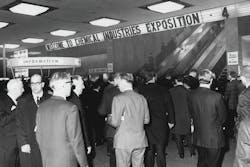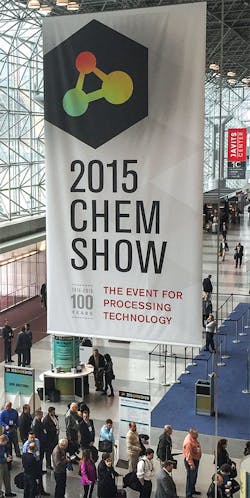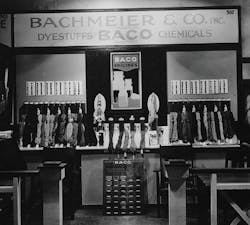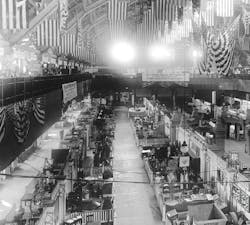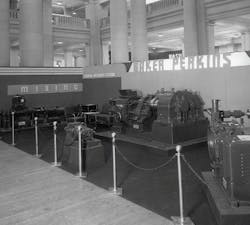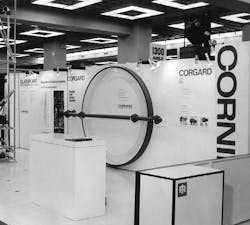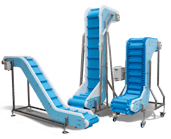World War I, or the War to End All Wars, was the catalyst for the first Chem Show. In 1915, Dr. Charles Roth, chief chemist for Standard Oil Company, teamed up with the International Exposition Company (IEC) to produce the first Chem Show to stimulate the domestic manufacturing of essential drugs, dyes and other chemicals. New York City was the location for the first show. And with the exception of three shows in Chicago and one in Philadelphia, every Chem Show since then has been in New York City. In 1987, the Chem Show moved to its current venue at the Javits Center, which opened in 1986. The show was previously held at the New York Coliseum on Columbus Circle and before that, the Grand Central Palace on Lexington Avenue where it all began. The 2017 Chem Show will be the 57th exposition and will be held Oct. 31 – Nov. 2.
Color the world
The need for dyes may have served as the impetus for launching the first Chem Show, if not to motivate the U.S. chemical process industries (CPI) to seek sources for domestic raw materials and cultivate know-how on the Western side of the Atlantic. In 1915, when the offshore sources of chemicals and dyes started to be cut off because of WWI, the U.S. had two choices where dyes were concerned. Either people wear all white clothing as a sacrificial contribution to the war effort, or step up to the plate and start producing dyes with American technology from domestically sourced raw materials.
Because this would mean a new source for chemicals that previously came from Germany, for example, it would make sense that this new-found domestic availability would need to be brought to light at the Exposition of Chemical Industries (the original and official name until 1997 when it became commonly referred to as the Chem Show). When it was discovered that the chemicals and dyes that were once imported were available in the U.S., the growing industry started to require increasingly more production.
Changes in exhibitors
If there is a consistent theme that can be assigned to the Chem Show, it would be “change.” The Chem Show thrived in the early 1920s as the leading resource for showcasing new inventions and continued as an annual event in New York City until 1923 when it changed to a biennial show.
However, the most dramatic “change” wasn’t the exhibition frequency, but the number of producers showing their finished chemical products versus the manufacturers of the equipment used to make those products. At the inaugural Chem Show, 30 percent of the total exhibitor base was chemical manufacturers, dropping to 4 percent in 1955, and only 0.5 percent in 2001.
The shift from the chemical producers showing their finished products at the exhibit to an increasing percentage of equipment and instrumentation associated with processing, production and packaging chemicals may be attributed to the need to make more chemicals, make them more efficiently, and the focus on how to do that.
As the demand for domestic products increased, so did the emphasis on developing and improving the equipment used to manufacture them. In the earlier days of the show, chemicals were becoming static commodities that were exhibited to show off their new availability. Process equipment, on the other hand, in the early years of this new-found industry was developing and evolving rapidly. The Exposition of Chemical Industries provided a face-to-face forum for equipment manufacturers to showcase their new technology. Exhibition visitors could see, touch and discuss the latest solutions to their production challenges.
Changes in technology
After World War II, the chemical process industries saw advances in instrumentation, controls and automation, which was perhaps an outgrowth of military developments. In addition, the military gave the industry methods for improved process monitoring with devices, such as photocells, infrared sensors and pressure and motion detectors. These technologies spilled over into industry and then evolved from there.
In addition to focusing on new equipment for improved production efficiency and product handling, there was an even greater post-World War II emphasis on new chemical plants to keep up with supplying the new chemicals coming from research and development (R&D) efforts as well as the rapidly-growing pharmaceutical market. And with these new plants came the impetus to automate. Instrumentation, controls, and automation continue to be an area of ongoing innovation.
Winds of change
In the late 1960s and early 1970s, environmental awareness began to emerge in the U.S., and along with it, environmental activism, which eventually helped to change the culture and attitudes of manufacturing. This environmental awareness generated demand for equipment, such as scrubbers and filters, which were in limited use before.
Environmental concerns continued to accelerate throughout the 1970s because of federal and state initiatives as well as growing awareness of pollution-related issues. And pollution levels have declined. Now, the cost of controlling pollution exceeds $85 billion annually, primarily through additions to existing technology.
Early chemical formulations were based on coal tar and petroleum. The environmental awareness efforts in the 1970s and several petroleum shortages had prompted some in the industry to seek out alternative fuel, energy and chemical sources that have historically been dominated by petroleum. In the early 2000s, ethanol plants began to appear. An ethanol plant uses the same types of equipment and materials as other types of chemical, pharmaceutical and food processing plants. The ethanol industry came along at a good time to boost business for the equipment manufacturers. It kept them going.
While change has been an unspoken theme of the Chem Show for 102 years, it has not stopped. The coming articles in this series will feature some of the practical challenges that chemical engineers and plant managers are facing, and the solutions the 2017 Chem Show will offer to the several thousand engineers, plant and production personnel, R&D and executives who will be in attendance this fall.
The 2017 Chem Show is Oct. 31 to Nov. 2 at the Javits Center in New York City. For more information and to register, visit chemshow.com.
Editor’s note: This article provided by the Chem Show appeared in the July issue of Processing as the first in a three-part series leading up tot he 2017 Chem Show.
